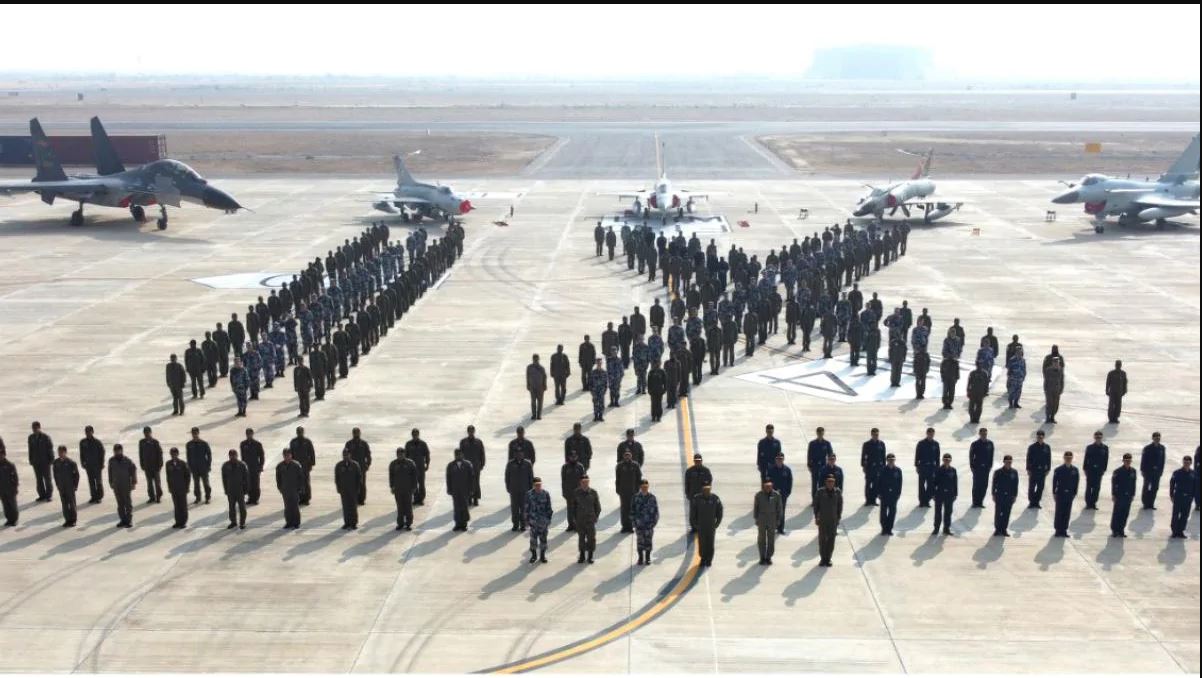
| Dated : 14 Dec 2020 (IST) The ninth joint airforce exercise SHAHEEN9 between China and Pakistan began on 09 December at Bholari airbase in Sindh, a new PAF base. The exercise which featured 50 fighter aircrafts, are believed to be the most advanced so far since the two countries began the exercises to enhance defence cooperation. The Indian Air Force closely monitored the exercise as after the military stand-off between India and China in eastern Ladakh a two front War with both China and Pakistan cannot be ruled out. It has been noticed by the IAF that the exercise included the PAF JF-17s, Mirage-IIIs and the People’s Liberation Army Air Force (PLAAF) J-10 and J-11s heavy fighters. Missing In flying was the Pakistan Air Force’s F-16 fighter aircraft. This seemed a bit surprising because Bholari, commissioned in 2017, is Pakistan’s third F-16 base. The US-built single-engine fighter is one aircraft Chinese pilots would love to match their skills against since they are in service with the South Korean and Taiwanese air forces. The People’s Liberation Army Air Force’s (PLAAF’s) J-10 itself is itself a copy of Lavi—a Chinese built version of Israel’s F-16 copy, the ‘Lavi’ fighter jet of Israel. For Pakistan to deploy F-16s in these exercises, however, would mean violating end-user agreements that Pakistan signed with the US while buying the aircraft. A breach of agreements would surely lead to the cancellation of all US’s technical support to Pakistan’s F-16s. Pakistan under severe US sanctions for its nuclear weapons program was permitted in 2001 to buy the F16s. the US resumed military sales to Pakistan in exchange for Pakistani assistance in the ‘Global War on Terror’. Over $10 billion worth of military hardware exported to the Pakistan military included 36 F-16 fighter jets of the newest Block 50/ 52 standard and the upgrading of the PAF’s existing fleet of 32 F-16s purchased in the early 1980s. The deal had strings attached—the end-user agreements which monitored how the aircraft were being used and who had access to them. These agreements are monitored by US military personnel and contractor representatives physically present on the ground in Pakistani airbases. There is a $125 million program to support Pakistan’s F-16 program approved by the US state department last year, But It Includes at least 60 “contractor representatives” working for a US-based firm assist in the overseeing of the operations. The reasons for these intrusive controls are that the US is wary of letting adversary China from laying their hands on the top-of-the-line US military hardware or knowing about their performance parameters like radar emissions which would enable them to develop countermeasures. Last year, for instance, the US cancelled a sale of F-35 fighter jets to Turkey because Ankara persisted with its purchase of Russian S-400 air defence systems. The US military had concerns that the S-400’s radars could be used to track its fifth generation fighter aircraft. US contractor representatives track the deployments of the PAF’s F-16. One Indian intelligence official recalls an incident from a few years ago when a US contractor representative had flown into an airbase to check why a PAF F-16 had made an unscheduled diversion there. The PAF might own the aircraft but the ownership is, clearly, largely conditional. |




